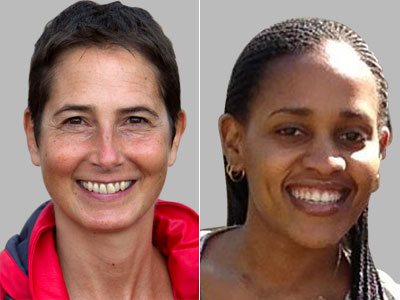The launch of The Second Economic Development and Poverty Reduction Strategy (EDPRS II) for Rwanda presents another challenging yet exciting opportunity for the country. The buzz around EDPRS II is everywhere: on a t-shirt in a gym, in several conference rooms and most importantly, in the news.


The launch of The Second Economic Development and Poverty Reduction Strategy (EDPRS II) for Rwanda presents another challenging yet exciting opportunity for the country. The buzz around EDPRS II is everywhere: on a t-shirt in a gym, in several conference rooms and most importantly, in the news.
But what does EDPRS really mean for Rwandan citizens? Ostensibly, this might seem far removed from several Rwandans and yet it actually manifests in our daily activities. The comprehensive strategy to drive Rwanda’s economic transformation for the next 5 years is something that we should all be concerned about, buy into, and inspire others to do the same.
This is EDPRS II in a simple equation. The whole strategy is around making life better for all Rwandans; marking Rwanda’s development by more than palm trees and beautiful roads but by a significant appreciable improvement in the life of many Rwandans.
Economic projections show that should Rwanda grow at the targeted 11.5% average growth rate for the next 5 years, then on average, every Rwandan will be earning $1240/yr (GDP per Capita); double the GDP per Capita today.
This is an extremely aggressive goal but not an impossible one. After all, Rwanda has made a name for itself in proving the impossible possible. Let’s put this in perspective by taking China as example. Several countries look to China today as example of economic transformation. China grew at an average of 9-10% at its peak. So yes, Rwanda is striving to beat China. Of course several factors must be considered for a fair comparative analysis, given that China is over 100 times the population of Rwanda and has an extensive coast-line but nevertheless, Rwanda is determined to double its GDP per Capita by 2020, beat China’s growth rate and reach middle-income status.
A win-win strategy
We have seen some developing countriesachieve middle-income status by focusing on economic development with little regard to poverty reductionwith regrettable results. With a wide gap between the rich and the poor, these countries have had to face several national challenges, a sure result of having 90% of a country’s wealth controlled by 10% of the population.
The trickle-down effects of focusing on economic development alone can last generations and this is why Rwanda is approaching its economic transformation agenda with a balance between economic development and poverty eradication.
This way most Rwandans will get out of poverty, become self-sufficient, and contribute to the country’s economic development.
The EDPRS II strategy focuses on 4 thematic areasthat have the balance between economic development and poverty reduction:
Economic Transformation – Note the use of the word transformation and not development. Using agriculture as an example, development is having several farmers able to grow enough food to feed their families instead of relying on the Government. Transformation is growing products in volumes sufficient for agro-processing e.g. tomatoes to make ketchup. Economic transformation is what will help Rwanda achieve the targeted 11.5% average GDP growth and increase private sector’s contribution to GDP to 20%
Rural Development – Currently about 45% of Rwanda’s population is considered poor. This means that close to 5 million Rwandans live on less than a dollar a day, making this strategy extremely critical. The goal of this pillar is to reduce poverty levels to under30% by 2017 and eventually further to under 20% by 2020.
Productivity and Youth Employment – If we are to double our GDP per Capita, we need to double our outputs. It is therefore crucial to ensure that the youth; tomorrow’s leaders, are core to Rwanda’s development and fully understand the vision they are to carry forward. This pillar’s goal is to create 200,000 off farm jobs per year anddouble every worker’s output. This does not mean that EDPRS II does not support Agriculture, but going back to the example on tomatoes; the creation of these 200,000 jobs will be realized if there is a bigger focus on transformative agriculture; tomatoesto make ketchupinstead of tomatoes to feed a family.
Accountable Governance – One of the key elements to truly realizing Rwanda’s vision is to keep its governance and its people accountable. This pillar is focused on increasing citizen participationso that they can own their development and learn to appreciate it. Another goal in this pillar is to increase service delivery satisfaction to over 80%.
There is so much to the EDPRS II strategy that cannot be covered in a single article but essentially with a vibrant private sector, invigorated youth and accountable citizens, EDPRS II is only the beginning for Rwanda.
Stay tuned for our next column on how the youth can drive this transformative strategy.
Disclaimer: Although the authors are respectively adviser and employee of The Rwanda Development Board (RDB), their opinion is not approbated by RDB and is an independent expression of their views and not those of RDB or any other Government of Rwanda institution.


